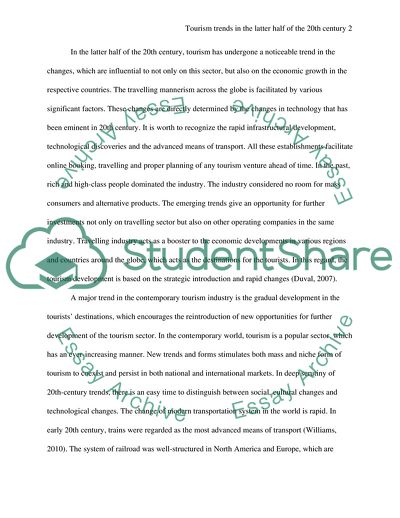Cite this document
(Tourism Trends in the Latter Half of the 20th Century Coursework Example | Topics and Well Written Essays - 1250 words, n.d.)
Tourism Trends in the Latter Half of the 20th Century Coursework Example | Topics and Well Written Essays - 1250 words. https://studentshare.org/tourism/1841496-tourism-trends-in-the-latter-half-of-the-20th-century
Tourism Trends in the Latter Half of the 20th Century Coursework Example | Topics and Well Written Essays - 1250 words. https://studentshare.org/tourism/1841496-tourism-trends-in-the-latter-half-of-the-20th-century
(Tourism Trends in the Latter Half of the 20th Century Coursework Example | Topics and Well Written Essays - 1250 Words)
Tourism Trends in the Latter Half of the 20th Century Coursework Example | Topics and Well Written Essays - 1250 Words. https://studentshare.org/tourism/1841496-tourism-trends-in-the-latter-half-of-the-20th-century.
Tourism Trends in the Latter Half of the 20th Century Coursework Example | Topics and Well Written Essays - 1250 Words. https://studentshare.org/tourism/1841496-tourism-trends-in-the-latter-half-of-the-20th-century.
“Tourism Trends in the Latter Half of the 20th Century Coursework Example | Topics and Well Written Essays - 1250 Words”. https://studentshare.org/tourism/1841496-tourism-trends-in-the-latter-half-of-the-20th-century.


